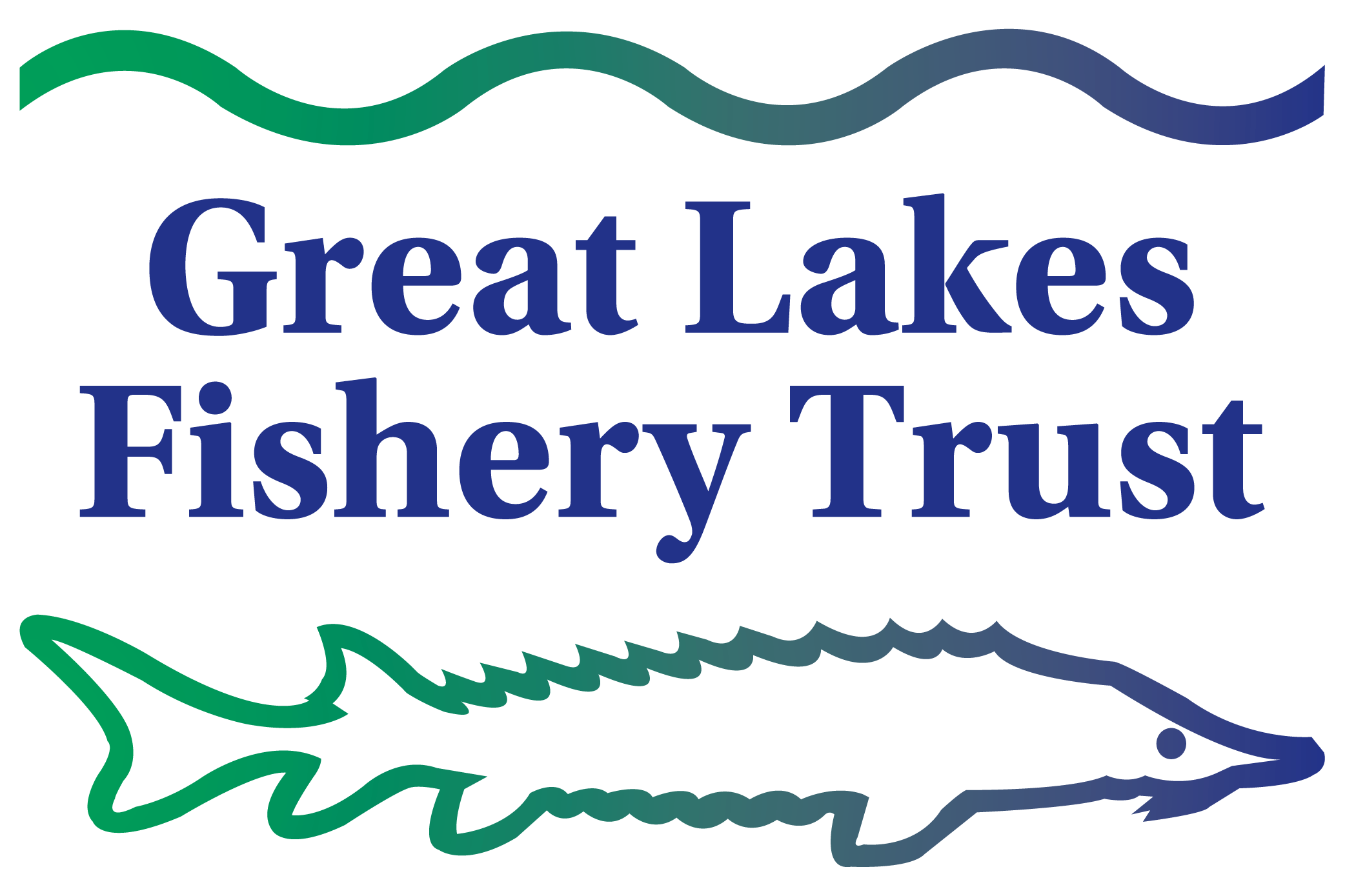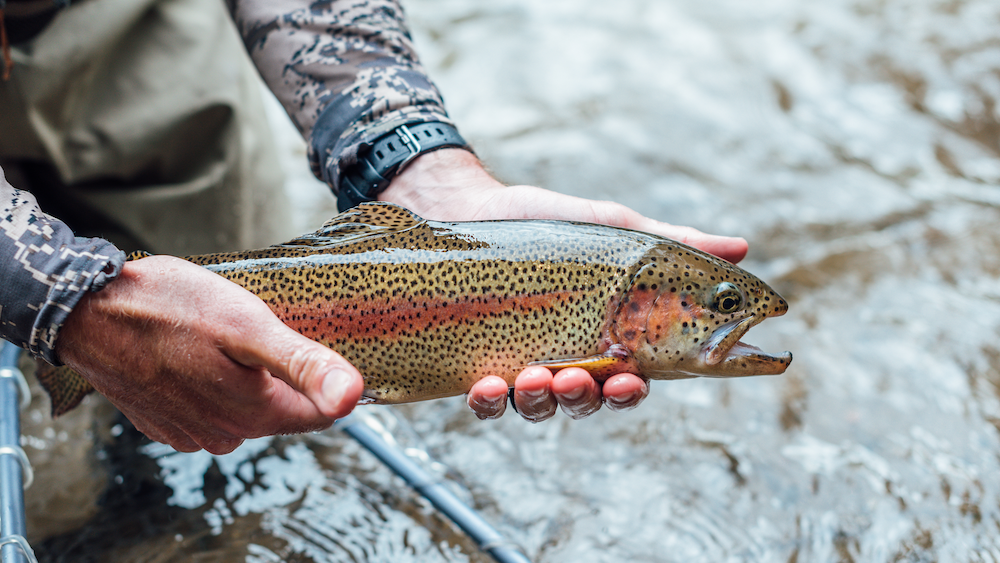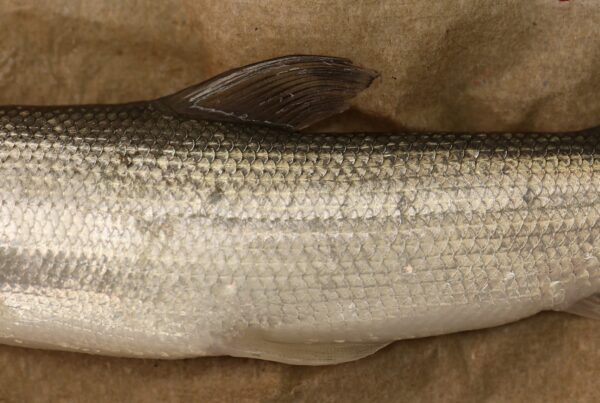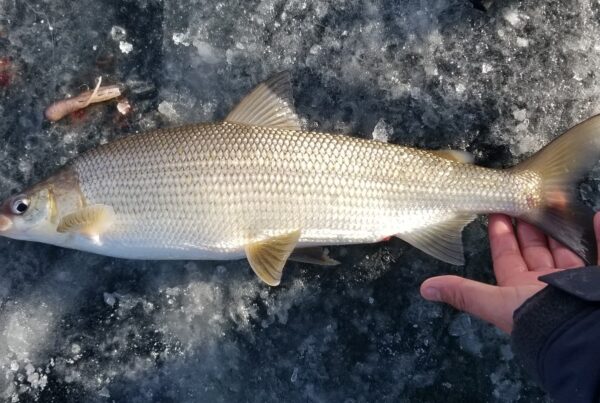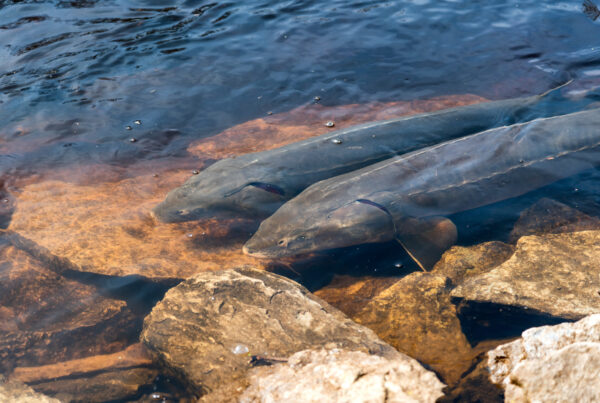Fishery managers in the Lake Michigan basin have new information about the journeys and survival of wild and hatchery-raised steelhead salmon (Oncorhynchus mykiss). Managing the fish effectively requires understanding the proportion of fish coming from hatcheries or the wild, generally, and from which hatchery and which river tributary, specifically. Lake Michigan steelhead populations are currently supported by extensive stocking from six hatcheries and natural reproduction from more than 40 river tributaries. Great Lakes Fishery Trust (GLFT)-sponsored research is advancing the use of otolith chemistry to identify where adult steelhead originated (i.e., natal origin) and how the fish are mixing in the open waters of Lake Michigan.
What Otolith Chemical Signatures May Reveal
From 2018 to 2022, a team led by Principal Investigator Kevin Pangle, assistant professor of biology at Central Michigan University (CMU), conducted research to evaluate the relative contributions of different sources to the Lake Michigan steelhead salmon fishery and how the contributions vary geographically and across seasons and years. Collaborating on the research with Pangle were Jory Jonas, Michigan Department of Natural Resources, Charlevoix Fisheries Research Station; Charles Bronte and Matthew Kornis, U. S. Fish and Wildlife Service, Green Bay Fish and Wildlife Conservation Office; and graduate assistants in the CMU departments of biology and of earth and atmospheric science Ben Breaker, Carson Prichard, and John Whitinger.
Adult steelhead in Lake Michigan originate from multiple locations along tributary rivers and from six hatcheries in Michigan and Wisconsin that stock the fishery. The conditions of these source areas impact the health and viability of the steelhead populations, yet the site-specific contributions of these sources are not well understood. The team used otolith chemistry to identify the natal origins of the harvested adult steelhead as the inner ear stones used for hearing and balance hold chemical signatures that allow researchers to identify a fish’s origins, even to the river in which it spawned. This work builds on findings from a previous GLFT-sponsored project that demonstrated otolith chemical signatures in juvenile salmon reveal significant tributary-specific differentiation. The comprehensive mapping of Lake Michigan tributaries from the previous project, including all streams identified as major contributors to wild salmon production, informed this project.
Objectives of the Lake Michigan Research
The specific study objectives were to 1) optimize and validate the application of otolith microchemistry to angler-harvested adult steelhead in Lake Michigan, 2) quantify the relative contributions of hatchery and wild origin steelhead, 3) compare source-specific hatchery contributions to those expected given stocking rates, 4) examine the degree of movement and mixing of hatchery and wild origin steelhead in Lake Michigan, and 5) identify the top producers of hatchery and wild origin fish.
The method and analysis required the collection of adult steelhead from ports in Indiana, Illinois, Michigan, and Wisconsin throughout the late spring, summer, and early fall seasons in 2016, 2017, and 2018. The fish in the study were harvested by recreational anglers (n = 1,415). The research team calibrated their methods by comparing their approach to wire-tagged adults. Their approach correctly classified 88 percent of fish.
Findings Elicit Steelhead Life Histories from Hatcheries and Rivers
The main findings of the research are the following:
- Among all years included in the study, 59 percent of fish were classified as hatchery origin.
- Among all years included in the study, 41 percent of fish were classified as naturally produced.
- In all years of the study, the majority of hatchery origin fish were assigned to the Wolf Lake State Fish Hatchery (WLSFH) ranging from 56 percent to 77 percent of all hatchery fish.
- The WLSFH and Thompson State Fish Hatchery accounted for 88 percent of all hatchery origin fish on average.
- Stream sites in the northern Lower Peninsula of Michigan accounted for 65 percent of wild origin fish among all years in the study.
- The Little Manistee River and Pere Marquette River watersheds accounted for 44 percent of all wild origin fish on average.
- The stock composition of wild origin fish was consistent across the study’s statistical districts in Lake Michigan. The stock composition of hatchery origin fish was consistent except in 2016.
- A high degree of movement and mixing of both hatchery and wild stocks occurs.
- Despite many potential sources of production of both hatchery and wild origin steelhead, fish from few sources comprised the bulk of the fishery.
This research improves understanding of the adult steelhead stock structure and mixing patterns in Lake Michigan and demonstrates that otolith chemistry can be a useful tool to describe stock composition of the fish. The results suggest that maintaining the four key sources that accounted for 70 percent of all steelhead harvest on average from 2016 to 2018 is important to the population in the Lake Michigan basin.
”Key sources of production include wild origin steelhead from streams in the northern Lower Peninsula of Michigan and hatchery fish originating from Wolf Lake State Fish Hatchery and Thompson State Fish Hatcheries .
Kevin Pangle, PhDDepartment of Biology, Central Michigan University
Learn more about using otolith chemistry to identify adult Lake Michigan steelhead
For questions, contact Kevin Pangle at [email protected].
Disclaimer
Research Notes includes the results of GLFT-funded projects that contribute to the body of scientific knowledge surrounding the Great Lakes fishery. The researcher findings and grant result summaries do not constitute an endorsement of or position by the GLFT and are provided to enhance awareness of project outcomes and supply relevant information to researchers and fishery managers.
